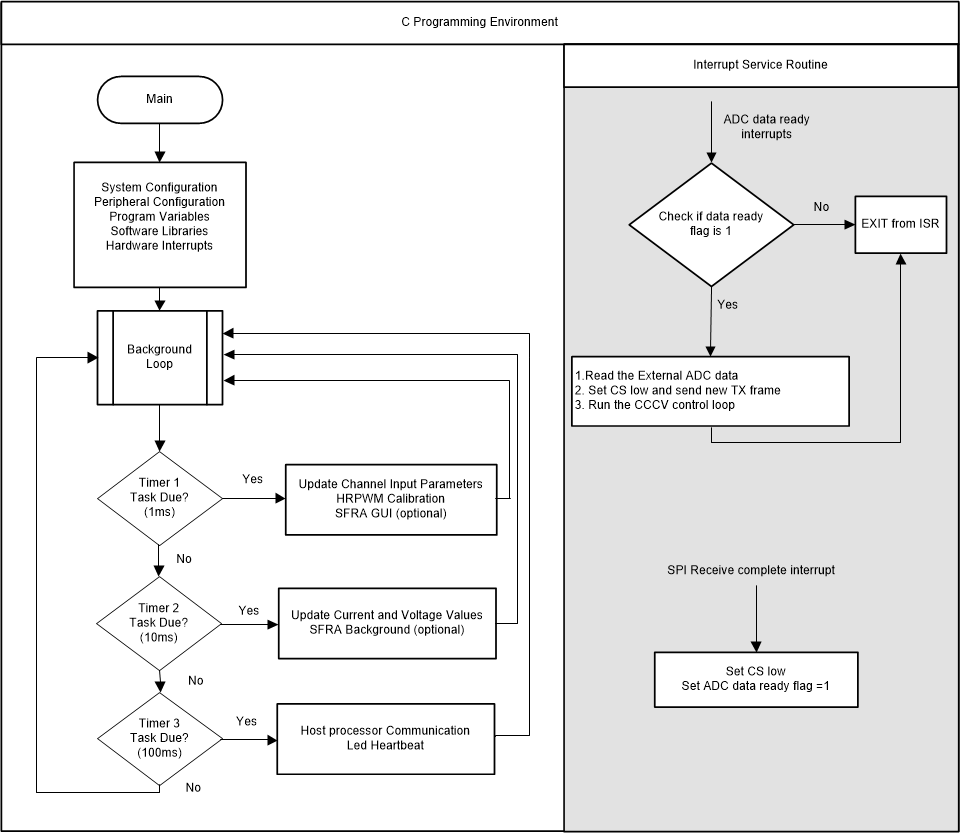TIDUEY0 November 2020
- Description
- Resources
- Features
- Applications
- 5
- 1System Description
- 2System Overview
- 3Hardware, Software, Testing Requirements, and Test Results
- 4Design and Documentation Support
- 5About the Author
3.2 Software
The software uses the Code Composer Studio (CCS) Integrated Development Environment (IDE) and C2000WARE-DIGITALPOWER-SDK library. Both C-Background and C-ISR framework is implemented in C-code. Figure 3-2 shows the software flow of this design. The background loop of the main application manages all system tasks, decision making, intelligence, and host interaction. The real-time critical actions such as ADC read, control updates, and PWM updates are executed inside the Interrupt Service Routine (ISR).
 Figure 3-2 Software Flow Chart.
Figure 3-2 Software Flow Chart.